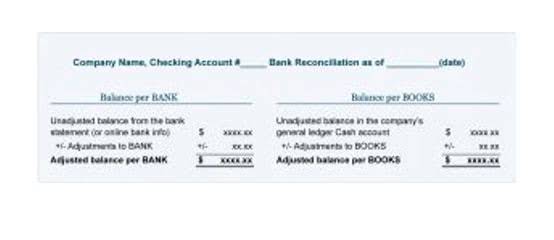
On the other hand, a business that has not reached profitability will debit a cumulative earnings/loss equity account with its losses, resulting in a negative balance. Knowing the normal balance of accounts for each account type will help you understand how debits and credits affect each type of account. For normal balance of accounts someone learning about accounting, understanding debits and credits can be confusing. The easiest way to remember them is that debits are on the left and credits are on the right. This means debits increase the left side of the balance sheet and accounting equation, while credits increase the right side.
Record Sales of Services on Credit

A current asset account that reports the amount of future rent expense that was paid in advance of the rental period. The amount reported on the balance sheet is the amount that has not yet been used or expired as of the balance sheet date. This is a non-operating or “other” item resulting from the sale of an asset (other than inventory) for more than the amount shown in the company’s accounting records.
How to Analyze Accounting Transactions, Part One
Assets (what a company owns) are on the left side of the Accounting Equation. If an account has a Normal Debit Balance, we’d expect that balance to appear in the Debit (left) side of a column. If an account has a Normal Credit Balance, we’d expect that balance to appear in the Credit (right) side of a column. As a result, companies need to keep track of their expenses and losses. This would change the Normal Balance of inventory from credit to debit. Identify each example in the following table as either disparate treatment or adverse impact.
- One of the fundamental principles in accounting is the concept of a ‘Normal Balance‘.
- Accountants must regularly scrutinize ledger entries to confirm that each transaction adheres to the principles of double-entry bookkeeping and reflects the correct normal balance.
- Now the question is that on which side the increase or decrease in an account is to be recorded.
- This is because its normal balance for prepaid expenses is a debit.
- In accounting, every account has a normal balance, which is the side of the account where increases are recorded.
Financial Accounting
Dividends paid to shareholders also have a normal balance that is a debit entry. Since liabilities, equity (such as common stock), and revenues increase with a credit, their “normal” balance is a credit. Table 1.1 shows the normal balances and increases for each account type. When a financial transaction occurs, it affects at least two accounts. For example, purchase of machinery for cash is a financial transaction that increases machinery and decreases cash because machinery comes in and cash goes out of the business. The increase in machinery and decrease in cash must be recorded in the machinery account and the cash account respectively.
- Examples of special journals could include a Sales Journal (SJ), Purchasing Journal (PJ), Cash Receipts Journal (CRJ), Cash Disbursements Journal (CDJ), Payroll Journal (PRJ), and so on.
- Understanding the normal balance of accounts is essential for recording transactions and preparing financial statements.
- Generally speaking, the balances in temporary accounts increase throughout the accounting year.
- Personal Selling course teaches students how to identify and understand the needs and wants of their customers.
- By following the expected normal balances, accountants can ensure that the financial statements accurately represent the financial position, performance, and cash flows of the business.
- While the normal balance of a liability account or equity account is a debit balance.
Journal Entry Illustrations for Various Account Types
- As a contra revenue account, sales discount will have a debit balance and is subtracted from sales (along with sales returns and allowances) to arrive at net sales.
- Normal balance is a fundamental concept in accounting that determines the expected side or category where an account balance should appear.
- Salaries Expense will usually be an operating expense (as opposed to a nonoperating expense).
- They use tools like accounting online resources to help tell the financial story accurately.
- For asset accounts, such as Cash and Equipment, debits increase the account and credits decrease the account.
Similarly, if a company has $100 in Sales Revenue and $50 in Sales Returns & Allowances (a contra revenue account), then the net amount reported on the Income Statement would be $50. A healthy company will have more assets than liabilities, and will therefore have a net positive cash flow. For example, the accounts receivable account will usually have a positive balance. Debits and credits are an important part of financial accounting. The terms “credit balance” and “debit balance” are often used interchangeably.
- Revenue accounts show money made from business activities and have a credit balance.
- This knowledge is then used to provide personalized solutions that meet the specific needs of the customer.
- So for example there are contra expense accounts such as purchase returns, contra revenue accounts such as sales returns and contra asset accounts such as accumulated depreciation.
- In accounting, a change in financial position essentially signifies an increase or decrease in the balances of two or more accounts or financial statement items.
- Although Sierra Vista is involved in a number of different business ventures, it is not currently involved in real estate either as an investor or as a developer.
Examples of Normal Balances

Equity accounts typically have a credit balance, as they represent the residual interest in the assets of the company after deducting liabilities. Increases in equity, such as from additional owner investments or profits, are credited, while decreases, such as withdrawals or losses, are debited. The maintenance of these accounts is vital for providing stakeholders with information about the value of their investment in the company. This standard discusses fundamental concepts as they relate to recordkeeping for accounting and how transactions are recorded internally within Indiana University.
Managing Outstanding Checks in Financial Reporting

When a payment is made, the credit entry is recorded on the left side and the debit entry is recorded on the right side. The debit side of a liability account represents the amount of money that the company has paid to its creditors. On the other hand, the accounts payable account will usually have a negative balance. This type of chart lists all of the important accounts in a company, along with their normal balance. A credit balance occurs when the credits exceed the debits in an account.
Normal Balances
When a company purchases goods or services on credit, it records a credit entry in the Accounts Payable account, increasing its balance. Conversely, when the company makes a payment on its account payable, it records a debit entry in the Accounts Payable account, decreasing its balance. By understanding and tracking the normal balance of Accounts Payable, businesses can manage their short-term financial obligations efficiently. Knowing and applying these rules well ensures operating expenses line up with revenues.
